Riding a Royal Enfield 1,500km through the Himalayas

It could have turned out to be a much crazier journey than it actually was. And it's fair to start with this promise, because once we returned home and recounted the adventure to friends, relatives, colleagues, and curious acquaintances, the look of amazement on their faces was the leitmotif of every single interaction. Indeed, it's almost frightening to say, "I drove 1,500 km across the Himalayan mountain range, ranging from 3,500 to 5,800 meters above sea level, reaching the highest peak in the world accessible by motorcycle. In some places, there was no asphalt. There weren't even guardrails, to be honest. But there was a precipice (or maybe more than one, like a hundred?) that, looking at them, offered little hope of survival in the event of a mistake. Sometimes there wasn't even a road; we invented one."
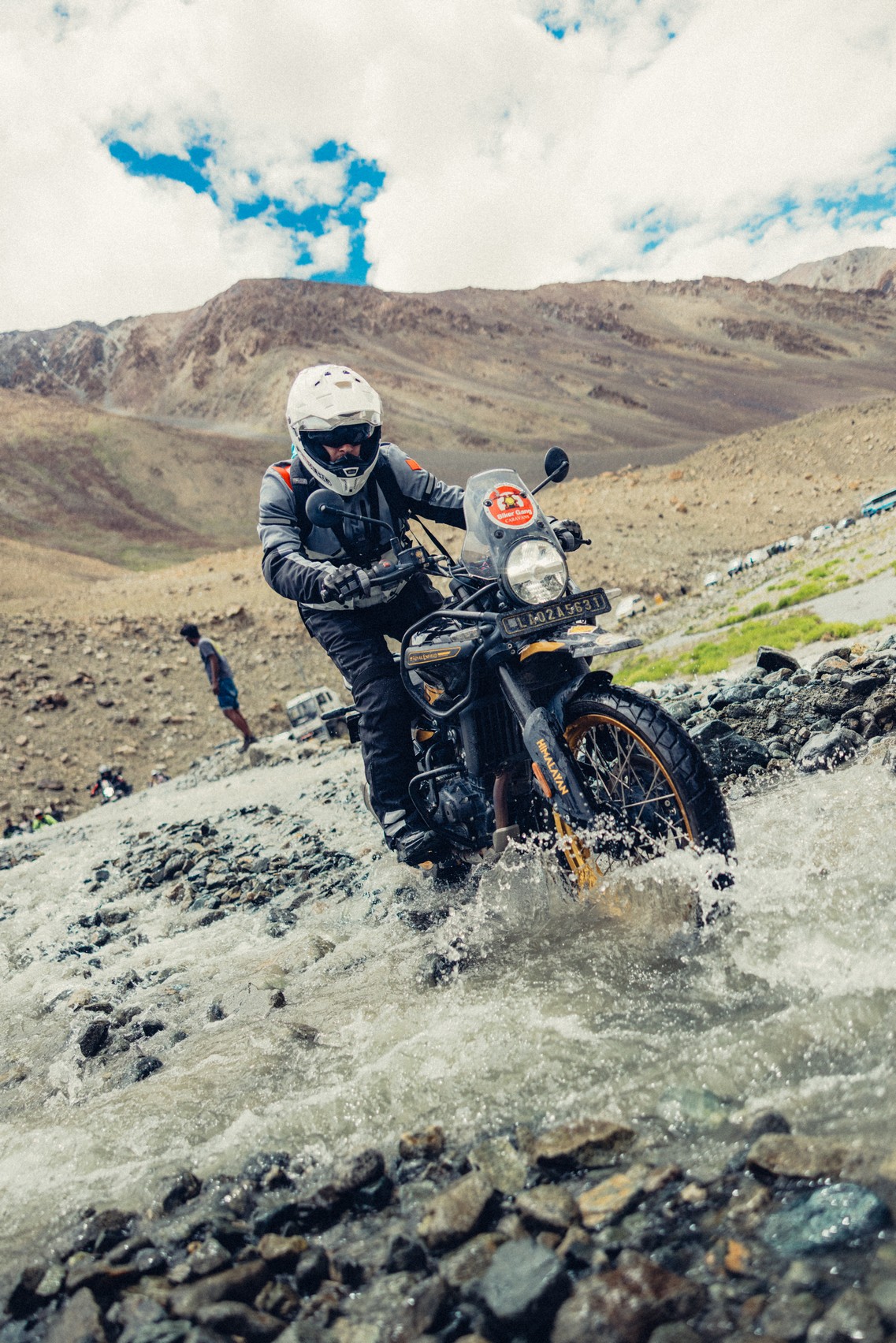
In truth, it must be said that Royal Enfield organized this trip impeccably, designing the event not only for journalists and professional testers, but also for beginners. Yes, of course, human error can always happen, but the tour leaders often opted to compact and slow the group down at critical points along the route, characterized by roads that were never truly narrow—another surprising aspect. The roads (or off-road terrain) along the route proved to be much wider than our provincial road on a mountain pass. So, even in the case of a slightly "long" stretch, there was plenty of room to patch things up. It's up to each individual to decide how far to go, but it's obviously always best to keep your wild cards in your pocket. Let's reiterate: the event is accessible to everyone.

Our travel companions—a Californian with over 50 years of off-road experience and a South African with over 30 years of track experience—experienced the same way we did, enjoying the experience in total relaxation, given the relaxed pace maintained throughout the eight days in the saddle. We were also accompanied by a Japanese and eight Turkish riders , each with very different levels of riding experience. This sometimes forced the group to slow down, but it's important to note that the route (admittedly a bit challenging for some) never seriously challenged the participants, even the less experienced ones with just eight or nine months of experience on two wheels.
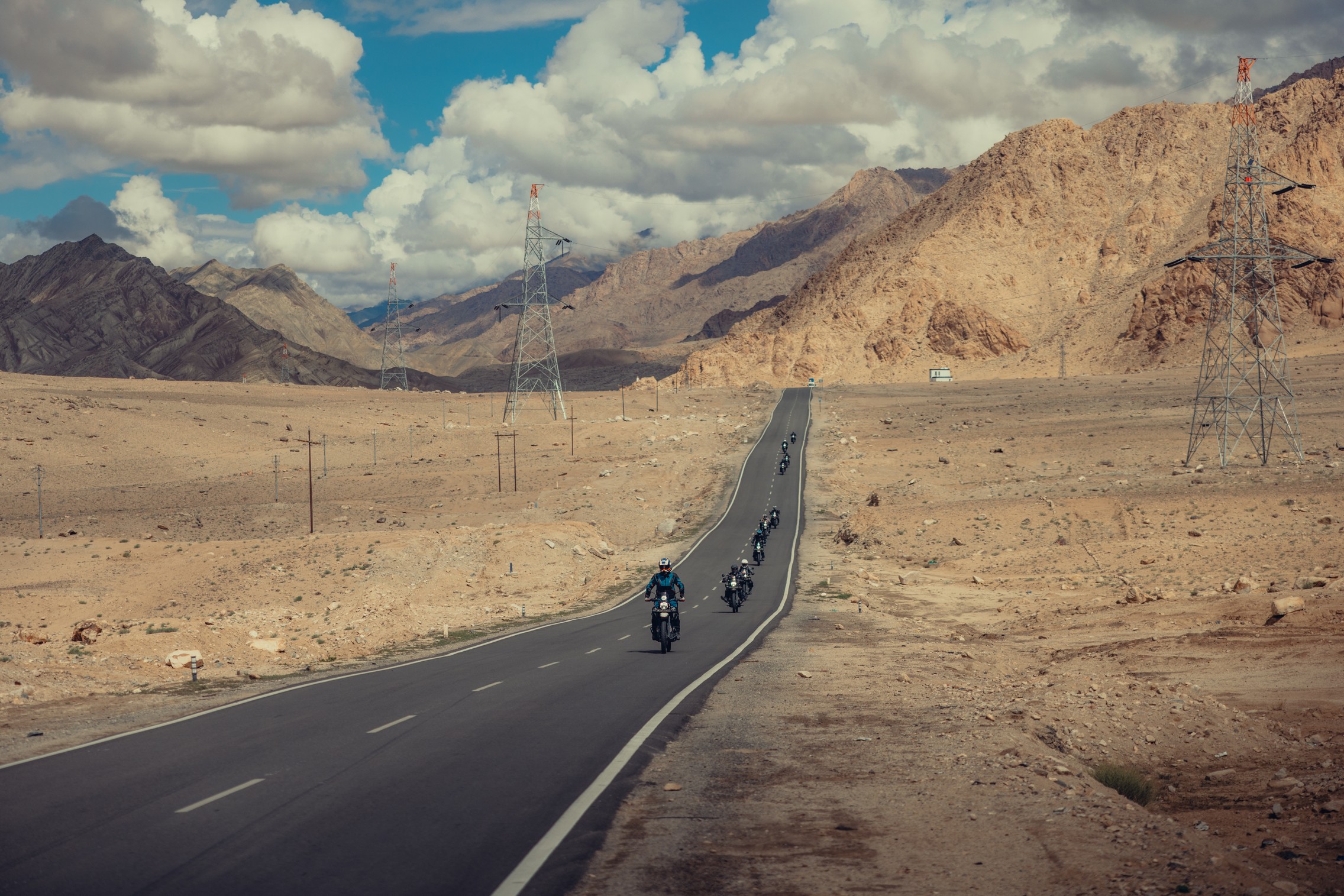
Without further ado, it's fair to point out that it was incredibly hot. Temperatures reached nearly 35°C at 3,500 meters above sea level in the town of Leh, in the Ladakh region of India, and reached 8°C —with patches of melting snow— at 5,800 meters , at the highest point of the Umling La, the highest mountain pass in the world accessible by car and motorcycle. Temperatures (in July) weren't particularly progressive, given that at 4,500 meters we rode at 24/25°C. In short, 1,500 km in the saddle spread over 8 days at these temperatures is doable, but be careful not to pack too warmly. And then there's the issue of altitude: Royal Enfield expertly allowed us to acclimatize for a couple of days at high altitude before strapping on our helmets and setting off. Because yes, you need to get used to living with thin air and an admittedly more limited amount of oxygen. So much so that as soon as we landed, climbing the flight of stairs to our hotel room, we found ourselves with our hands on our knees, catching our breath. Something that, obviously, would never have happened in Italy, except perhaps on Mont Blanc.
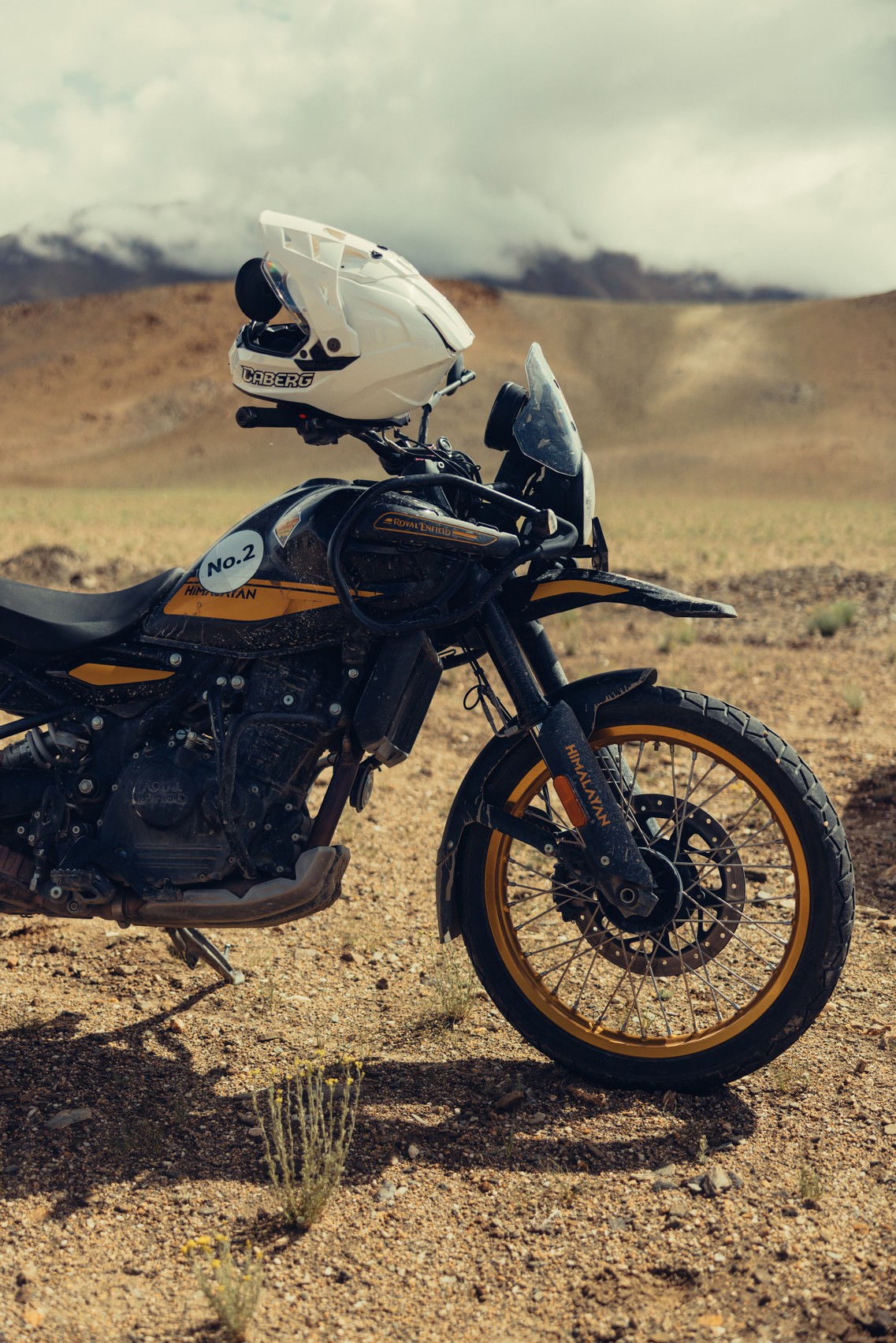
The planet's most rugged mountain range lends its name to the Royal Enfield Himalayan 450, a liquid-cooled single-cylinder now capable of 40 hp , nearly doubling the power of the previous model, and our travel companion. An unpretentious adventure bike, the Himalayan 450 is practical, simple, and affordable (at €5,900), ready to be ridden in even the most demanding conditions without a qualm. The transmission is a manual 6-speed gearbox without a quickshifter, so the use of the (soft) clutch is practically mandatory both when upshifting and downshifting. The limited power gives the bike an extremely peaceful spirit.

For this reason, we never felt pressure, anxiety, or fear of not being up to the task. Knowing you're riding a balanced, calm, and progressive motorcycle is one less thing to worry about. Especially when you're on the other side of the planet, off-road, in a socio-economic-cultural context completely different from Italy. Seeing is believing. Royal Enfield, with the Himalayan 450, focuses on simplicity: even the electronics are kept to a minimum. No traction control , two engine maps (Performance and Eco, the latter practically superfluous given the modest power output), ride-by-wire, and disengageable ABS only at the rear.
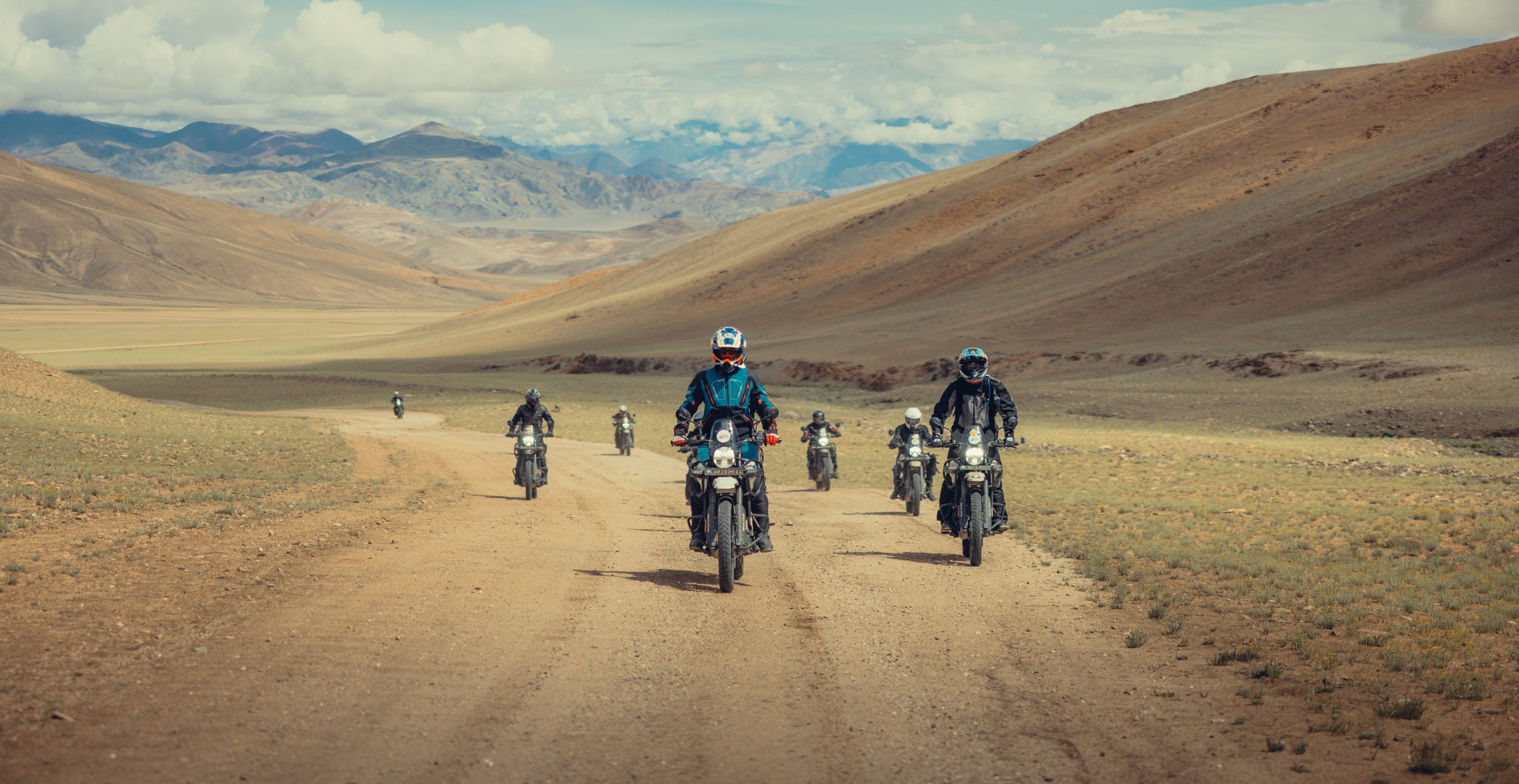
Our first contact with the Royal Enfield Himalayan 450 occurred when we reached the point where the Indus and Zanskar rivers meet. Here, we had an initial briefing, followed by about 60 km of riding to familiarize ourselves with the bike in preparation for the first real day of riding, heading southeast from Leh to Pangong Lake, located at 4,350 meters above sea level. To get there, we tackled a series of fords (some of moderate difficulty), 175 km (mostly on asphalt), and the Chang La Pass (a pass at 5,360 meters). The following dawn, we almost reached the border with China, covering 110 km entirely on asphalt before reaching Hanle. Here, a tent and two nights under the stars awaited us (without the possibility of a shower for 48 hours).
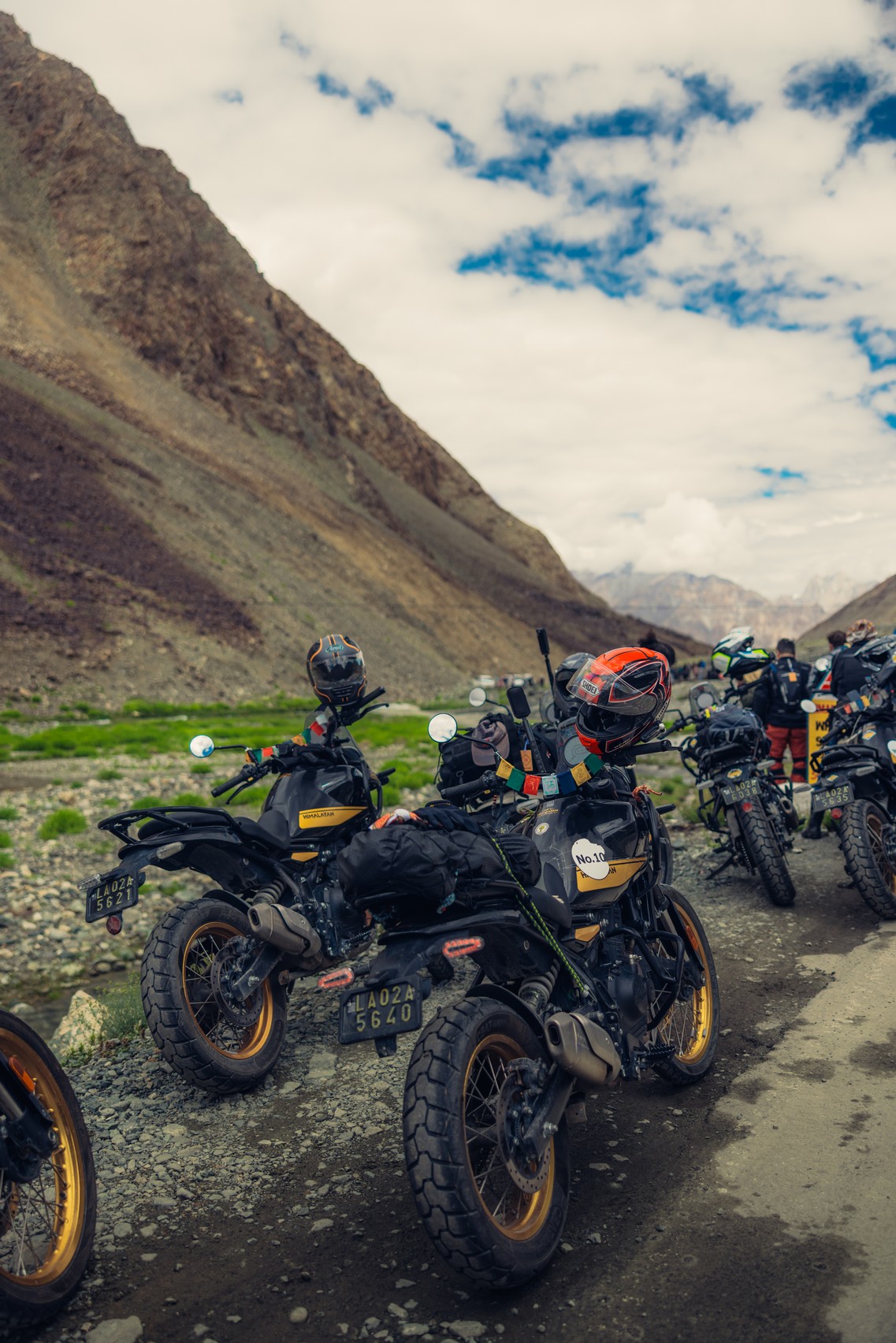
The most challenging day was undoubtedly the first one after waking up in the tent: a total of 220 km, from Hanle to Umling La , the highest road in the world accessible by car and motorcycle at 5,798 meters. The route included several off-road sections, totaling 50/60 km. In some sections—once the asphalt ran out and the off-road trail also ended—we found ourselves having to blaze our own trail, much like Dakar rally drivers do, in these mountainous expanses with barely a glimpse of the horizon. Leaving base camp the following day, we continued for another 300 km, all on asphalt, passing through Leh again, to Saspul . From there, we took the road to Khardung La , 5,359 meters, a thrilling peak also accessible by motorcycle. Having reached Hunder , on the banks of the Shyok River, on the penultimate day we opted to visit Turtuk, a town on the border with Pakistan. Finally, passing through the Khardung La, on the eighth day of riding we returned to Leh, the starting point of our journey.
The final reflection picks up where we started. Although it's often described as a very challenging and complicated journey—just mention the Himalayas and everything seems more difficult—the reality is that our experience was within everyone's reach . Perhaps by opting for more challenging routes, pushing the pace, or riding higher-performance motorcycles, it's possible to experience it with that extra bit of adrenaline, putting your body to the test even more, while still remaining within the confines of Ladakh. Aside from a small collision between two Turkish riders, the level of difficulty of the off-road sections never came close to that of many of the "twin-cylinder" sections we encounter in Italy.
It must be said, however, that the organizers opted to cut about a hundred kilometers of off-road terrain due to adverse weather conditions in the area. It's a shame, but with semi-knobby tires and a 40-hp single-cylinder engine weighing 200 kg, you couldn't risk it at 5,000 meters. It was a journey more difficult mentally than physically. However, it was all worth it for the views: it felt like being in the middle of the desert, with sand on the sides of the road, and then—looking up—watching these endless peaks rise, barely making out the snow on top.
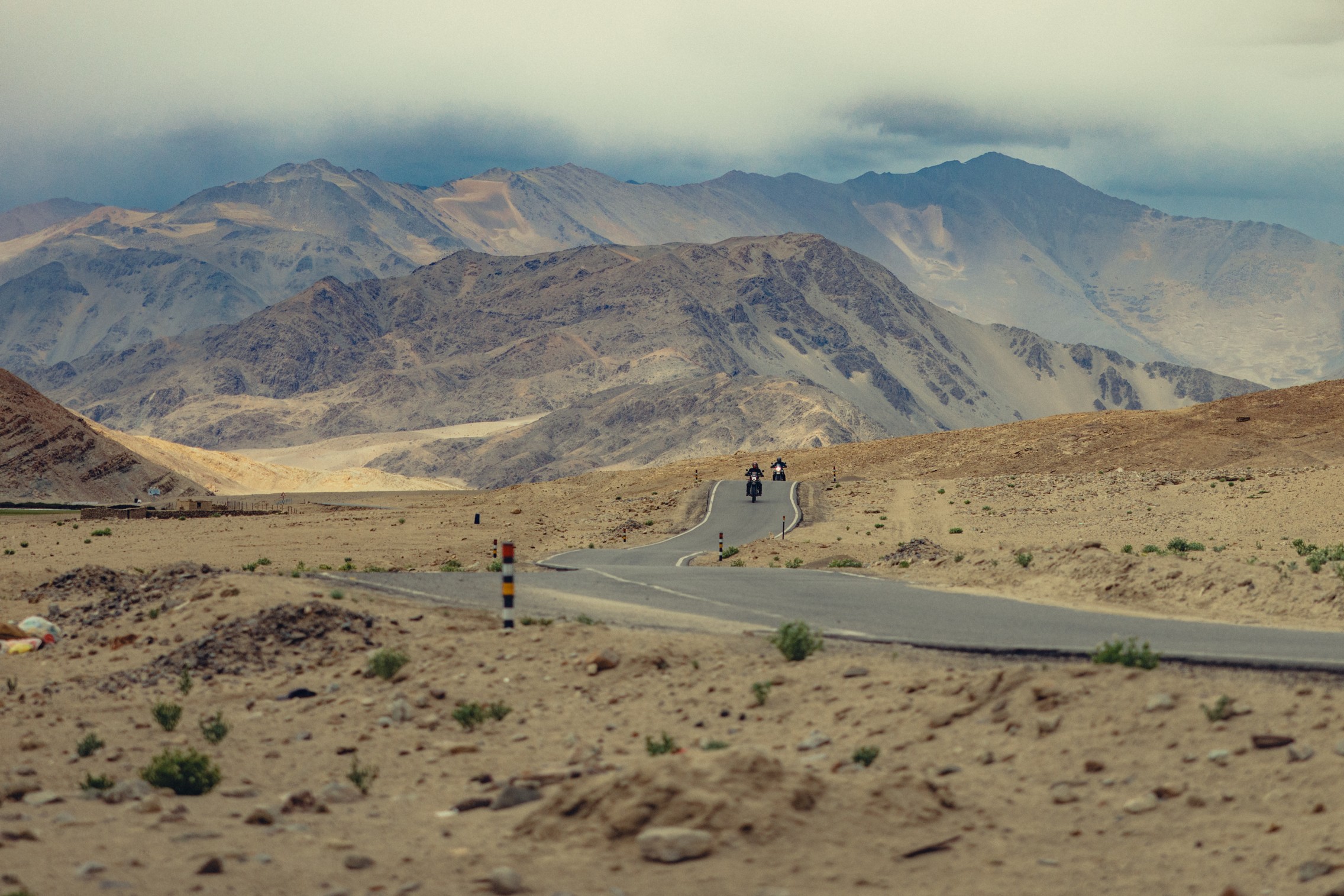
| Motor | single-cylinder 4-stroke liquid-cooled, 451.65 cc, 4 valves, Euro 5+ |
|---|---|
| Power | 40 hp at 8,000 rpm |
| Couple | 40 Nm at 5,500 rpm |
| Change | 6-speed manual, multi-disc clutch |
| Dimensions | Length 2285 mm, width 852 mm, height 1316 mm, ground clearance 230 mm, seat height 805-845 mm, wheelbase 1510 mm, dry weight 181 kg, kerb weight 196 kg, fuel tank capacity 17 litres |
| Chassis | double steel beam |
| Suspensions | Front: 43mm Showa upside-down fork with 200mm of travel; Rear: Showa hydraulic monoshock with 200mm of travel |
| Brakes | Front: Single 320 mm diameter disc, permanent ABS; Rear: Single 270 mm diameter disc, switchable ABS |
| Tires and rims | front 90/90-21”; rear 140-80-17” |
| Consumption detected | 34.7 km/l |
| Price | 5,900 euros. |
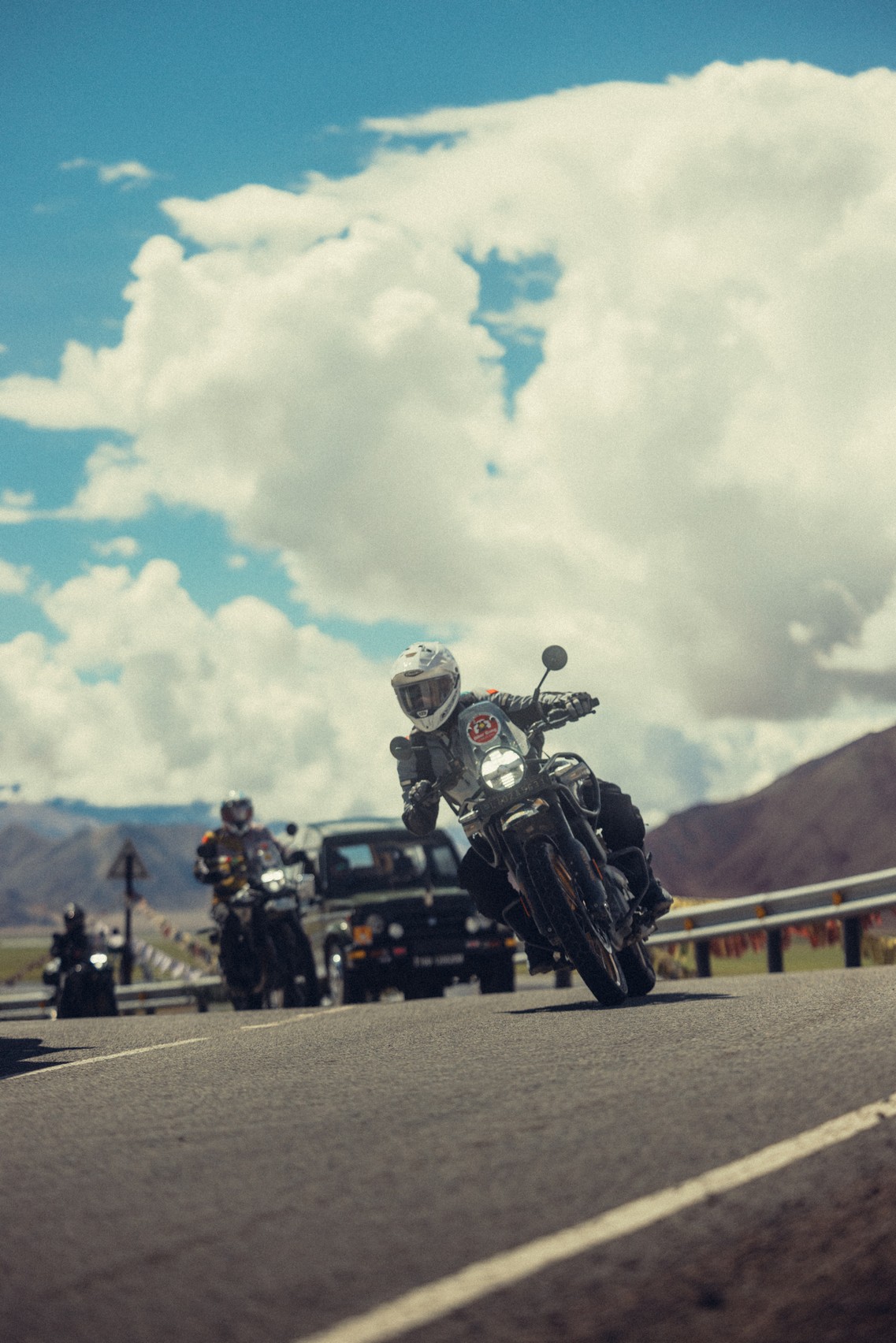
| Helmet | Caberg Tanami A1 |
|---|---|
| Gloves | T.Ur G-Speed Gray and T.Ur G-Five Hydroscud |
| Technical underwear | Dainese and Acerbis |
| Jacket | T.Ur Waypoint Ice |
| Back protector | T.Ur Comfort Back |
| Pants | T-Ur Gibraltar |
| Raincoat | T-Ur Must Have Jacket Black |
| Rain pants | T-Ur Must Have Black |
| Boots | Eleveit Tonale WP |
| Duffel bag | Ogio RIG 9800 |
| Tester | 174 cm, 82 kg. |
La Gazzetta dello Sport





